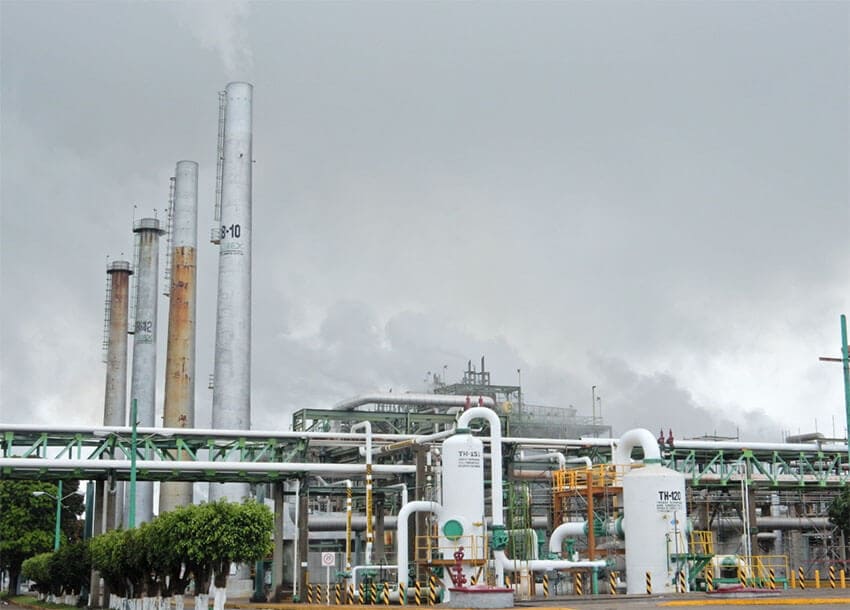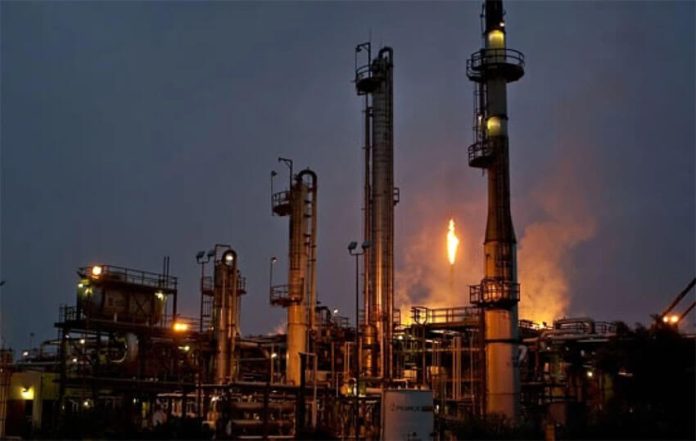The volume of excess gas disposed of by the environmentally harmful practice of flaring increased 50% in Mexico between 2018 and 2020, according to an analysis conducted for the news agency Reuters.
Scientists at the Earth Observation Group (EOG) of the Colorado School of Mines analyzed NASA satellite images of flare sites across Mexico and determined that flaring has increased significantly since 2018, the year President López Obrador took office.
Many flare sites are facilities operated by the state oil company Pemex, such as the Cactus natural gas processing center in Reforma, Chiapas, a municipality on the border with Tabasco.
Data compiled by the EOG team showed that 5.8 billion cubic meters (bcm) of gas was flared in 2020, up from 3.9 bcm in 2018. The 2020 volume made Mexico one of the world’s top 10 flarers, Reuters said.
Pemex doesn’t publish data on gas flaring, but has acknowledged that reducing the high levels of excess gas burning is among its greatest challenges. It doesn’t appear to have made any progress so far.

EOG data for the first 10 months of 2021 indicated that Mexico was on track to flare more gas than in 2020.
The burning of excess gas releases carbon dioxide and methane – a more potent greenhouse gas – into the atmosphere. Mexico has committed to reducing methane emissions and cutting flaring by 2030, but the EOG data suggests that the country is “moving in the opposite direction from a global push to rapidly reduce greenhouse gas production,” Reuters said.
Last year, the biggest flare volumes occurred in the states of Chiapas, Veracruz and Tabasco, and offshore in the Gulf of Mexico, where many large oil fields are located.
Reuters reported that it never gets completely dark in the community of El Carmen due to a red glare created by frequent flaring at the Cactus gas processing center, Mexico’s largest. The facility doesn’t have the capacity to process the huge volume of gas that is emitted as a byproduct during oil production.
Flaring the gas the facility can’t process is cheaper than investing in infrastructure to capture, process and transport it for other uses, Reuters said.
Communities near flaring sites can be affected by pollution, while the emission of large quantities of greenhouse gases contributes to climate change. Reuters reported that three of the five largest flares in Mexico in 2020 were close to several communities, including El Carmen, which is located between the Cactus and Nuevo Pemex gas processing centers.
In a complaint sent to Pemex last September, El Carmen residents said that there had been six major environmental incidents related to flaring since July. They say that a lagoon used for fishing is polluted by oil residue, soil is contaminated, ash falls from the sky like rain and there is a sulfur-like smell in the town.
In its most recent quarterly report, Pemex said that 13% of gas created as a byproduct of oil production is wasted. That’s over six times higher than the 2% limit set by regulators.
With reports from Reuters
